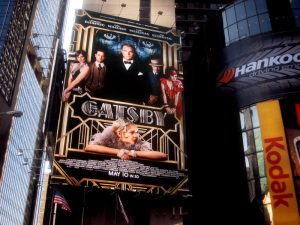Whenever I’ve moved from one city to another, I have had to pack up my extensive (some would say inordinately so) library of books, and I often don’t get to revisit some of my favorite books for several years. And while I own multiple copies of some texts, the ones most prized are those containing my personal observations or original notes in the margins. When I revisit these older texts after an extended hiatus, I invariably have a simultaneous sense of familiarity and disassociation reading the marginalia or notes I scribbled alongside or accompanying the texts I read sometimes decades ago. Encountering my own marginalia is like meeting my younger self as someone else. I now respond to and judge (sometimes amusingly) the naïveté or prescience of myself as a novice reader.

Do we react to rereading long put-aside texts today in the same way we did upon first reading? Is the text immutable, or has our education and experience of the world around us changed the impact and significance past readings of literature had for us?
We will be exploring these questions and others in this summer’s Toronto Classical Pursuits three-session afternoon seminar The Great Gatsby: The Greatest American Novel? Many of us read this novel for the first time in high school or as young adults in college. How do we read it now as mature and more sophisticated readers? Is The Great Gatsby worthy of the preeminent status it now holds in the canon of American literature? Is it indeed one of the “greatest” American novels (along with Huckleberry Finn, Moby Dick, To Kill a Mockingbird, etc.)?
In his prefatory notes accompanying the manuscript of his last unfinished novel The Last Tycoon, F. Scott Fitzgerald wrote that “There are no second acts in American lives . . .” This curious observation has caught the public imagination as we challenge Fitzgerald’s pronouncement with scores of examples of failures, losses, or falls from grace by numerous celebrities, politicians, and public figures across the 20th and 21st centuries.

Fitzgerald initially wrote a version of this quotation in a 1932 essay titled “My Lost City” in which he said that “… there was certainly a second act to New York’s boom days…” obviously indicating the author’s confidence in and optimism about the future possibilities for a city only recently suffering an economic disaster precipitated by the stock market crash of 1929. When Fitzgerald wrote about “a second act” in his notes for The Last Tycoon, perhaps he meant this novel to be his own second act, having suffered a downward spiral of commercial failure, financial woes, and personal health and psychological challenges that beset him and his wife Zelda.
Sadly, Fitzgerald would never know whether his last novel would be his successful second act. He died in 1940 at the age of 44, with The Last Tycoon less than half finished. Although his first novel This Side of Paradise received excellent reviews and he also wrote numerous short stories for which he was paid well, his third novel, The Great Gatsby, was a commercial failure. Some reviewers saw it as a second-rate crime novel (others as a novel in the spirit of 19th-century sensation novels where maintaining suspense was at times more important than the narrative). When Fitzgerald died, his last royalty check was only around $13 ($282 in today’s money)!
Is the story of Jay Gatsby analogous to Fitzgerald’s own life – a man who comes from nothing, invents himself in part to win the woman of his dreams, and then sees it all collapse? Was there no second act for F. Scott Fitzgerald?
Ironically, there was a “second act” for Fitzgerald but not in his own lifetime. After his death, when the US government donated more than 22 million books to World War II American troops serving abroad, Fitzgerald’s 1925 novel (an overstock backlist item) was among them. Prominent literary critics like Lionel Trilling helped to secure a place for Fitzgerald’s novel of the Jazz Age in the literary canon. Gatsby is now a mainstay in high school and college English classes. After numerous reprints and film adaptations, a new Broadway musical whose advance marketing boasts that you can “transport yourself to the opulent world of the 1920s as one of the greatest American novels hits the greatest American stage” will open April 25 at the Broadway Theater (one of Broadway’s largest houses).
The Great Gatsby has enjoyed a victorious second act commercially, having sold more than 30 million copies since Fitzgerald’s death (at which time it had barely sold 25,000). What is it about the book that continues to capture our imaginations?
Whether you are able to join our afternoon seminar or not, I would encourage you to reread this American literary gem and judge for yourself. Is it worthy of a successful “second act” as part of your own personal canon of great literature? As we meet at Toronto Pursuits and discuss this wonderful book together in person, we will all be enriched by our rereading it as part of our own “second acts.”
Image credits: Copy of The Great Gatsby, “Write On with Miss G“; 1974 movie poster, theeducationshop.au; 2013 movie poster in Times Sqaure, Brecht Bug on Flickr




